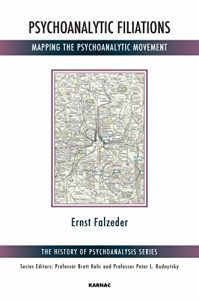This book presents a collection of fifteen essays on the early history of psychoanalysis, focusing on the network of psychoanalytic "filiations" ("who analysed whom") and the context of discovery of crucial concepts, such as Freud's technical recommendations, the therapeutic use of countertransference, the introduction of the anal phase, the birth of the object-relations-model as opposed to the drive-model in psychoanalysis, and the psychotherapeutic treatment of psychoses. Several chapters deal with key figures in that history, such as Sandor Ferenczi, Karl Abraham, Eugen Bleuler, Otto Rank, and C.G. Jung, their respective relationship to Freud, and the consequences that their collaboration - as well as conflicts - with him had for the further development of psychoanalysis up to the present day. Other chapters give an overview of the publications of Freud's texts and of unpublished documents (the "unknown Freud"), the editorial policy of the publications of Freud's letters, and the question of Freud's negative attitude toward America. Most of these essays are single-authored, but three of them are co-authored by highly renowned scholars in the field: John Burnham, Andre Haynal, and Ludger M. Hermanns. Although all of these papers originally appeared elsewhere, albeit in different books and journals, and in different languages, they are published here for the first time in one compact and easily accessible volume, and in one language. Also included is a high-resolution colour print of Falzeder's famous graph of the psychoanalytic "spaghetti junction", detailing the filiational network of some 480 early psychoanalysts.
Psychoanalytic Filiations: Mapping the Psychoanalytic Movement (The History of Psychoanalysis Series)
Sobre
Talvez você seja redirecionado para outro site












